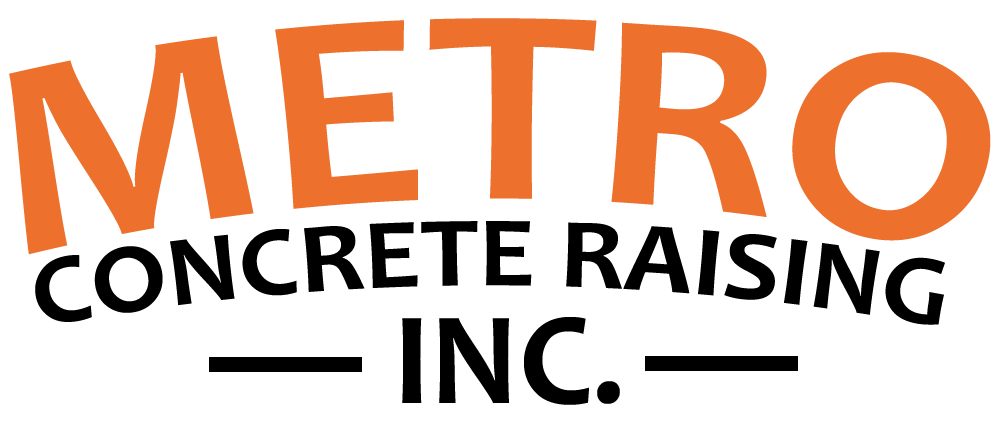FAQs
Metro Concrete Raising Inc
Have a concrete raising or replacement service-related question? We have the answer. Check out these FAQs and call us today for more information!
-
What is mudjacking?
Mudjacking is a process where 1” diameter hole’s are strategically drilled in concrete and a crushed limestone slurry is pumped under the slab, filling voids and displacing water which stabilizes the ground. Then the slabs are raised to the desired elevation. Once this is completed the area is pressure washed and the holes are patched with concrete. The area will be ready for use immediately.
-
Why is mudjacking superior to other forms of concrete raising?
Mudjacking provides the greatest control over the lift. The moment we release the pump trigger the slab stabilizes in that position. Other techniques, such as poly jacking and poly foam jacking do not have that control. More importantly mudjacking does not inject chemicals into the soil. We use crushed limestone, which is environmentally friendly, and solidifies for a more permanent fix .It does not damage the surrounding landscape and it costs MUCH LESS than the new processes like poly jacking and poly foam jacking. Trust the process that’s tried and true and not a new technique that has not been proven, is bad for the environment, and costs much more.
-
How do you charge for mudjacking?
Estimates are based on time and materials - how long will it take our crew to complete the work and how much material is required. Prices are based on the assumption that there are no significant voids. If a significant void is discovered we will discuss additional costs before we proceed.
-
How visible will the filled holes be?
We use 1-in. diameter holes, the smallest holes in the slabjacking industry, and we fill the holes with tinted mortar for the best possible color match. Pressure washing will make the surrounding surface look clean and improve the match.
-
How much can I save by raising rather than replacing concrete?
Mudjacking typically costs about one-third as much as replacing concrete because there is no demolition or landscaping restoration or minimum truck load fees and it requires less labor, equipment, and hauling.
-
What causes concrete to sink?
Concrete settles from poor compaction, improper soil preparation, erosion, excessive loading, or poor grading. Downspouts should direct water away from the foundation and paving and landscaping should slope down and away from foundations to avoid water problems.
-
Will a raised concrete slab continue to settle? Is mudjacking permanent?
We have mudjacked thousands of concrete slabs each year since 1992 and we very rarely have callbacks. We warranty our work for up to three years.
-
What can I do to preserve my concrete and prevent further settling, deterioration or cracking?
Horizontal concrete surfaces should be cleaned and sealed every two years to protect them from moisture and salt. Landscape surrounding areas to direct water away from the structure. Try to keep heavy dumpsters and delivery trucks off your concrete driveway during remodeling projects. Avoid using salt on your concrete. And keep cracks sealed with self-leveling concrete-colored caulk.
-
What do you do to make your concrete last?
We used a high-strength, 4,000 psi minimum mix and installed reinforcing rods in every slab. We cut control joints strategically to prevent random cracking, and we seal every job with a penetrating sealant to extend curing time and prevent salt intrusion.
-
Do you do commercial and residential snow removal?
We offer both commercial and residential snow removal in the South Metro. Pricing is based on the size of the project and the amount of snow. We offer both seasonal and per event pricing.


Share On: